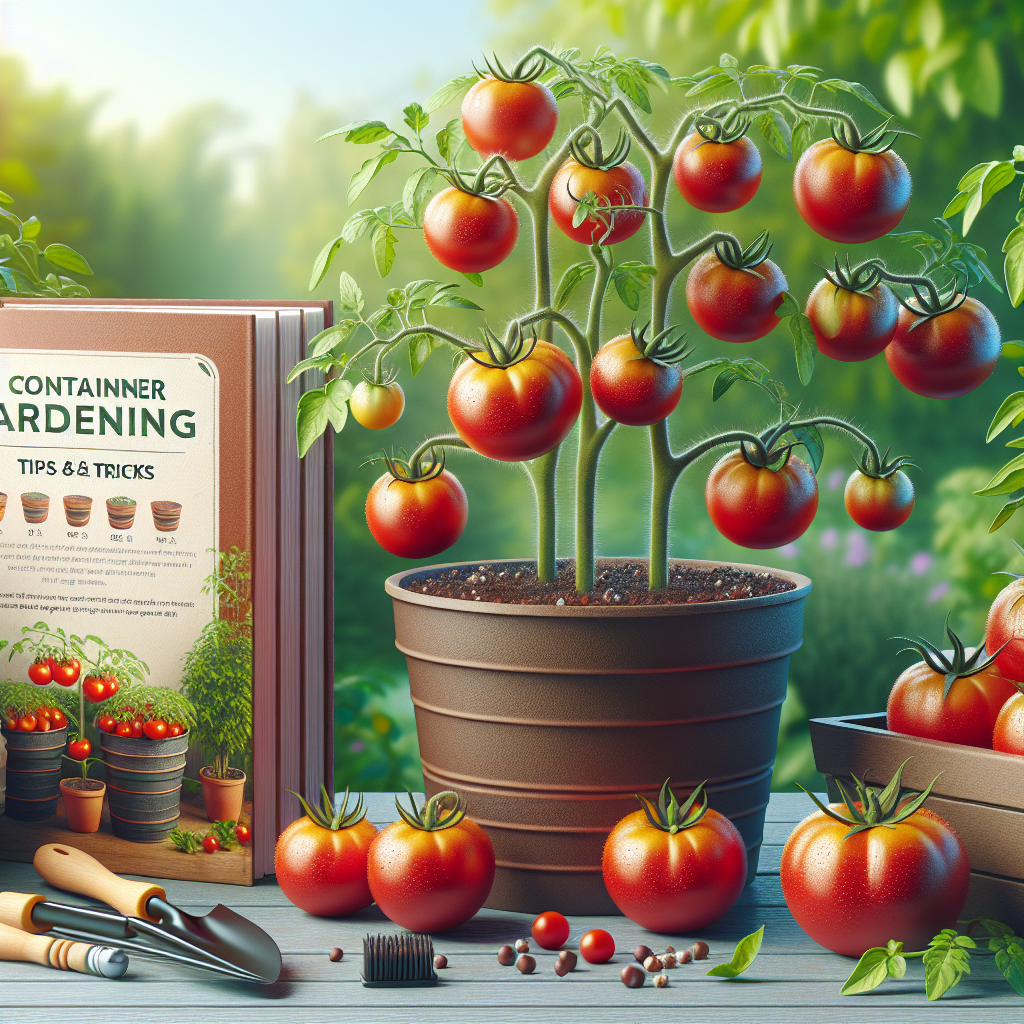Growing Juicy Tomatoes: Container Gardening Tips and Tricks
Tomatoes are a popular vegetable to grow in gardens, but not everyone has the space for a traditional garden bed. Fortunately, container gardening provides a fantastic alternative for those with limited space. With the right tips and tricks, you can have a bountiful harvest of juicy tomatoes right at your doorstep. Here are some valuable insights to help you successfully grow tomatoes in containers.
1. Selecting the Right Containers
Choosing the right containers is crucial for successful tomato cultivation. Opt for pots or containers that are at least 18 inches deep with a similar width. This provides enough room for root development and prevents waterlogging. Ensure your chosen containers have drainage holes to allow excess water to escape.
2. Picking the Perfect Tomato Variety
Not all tomato varieties are suitable for container gardening. Determinate varieties, also known as bush tomatoes, are recommended as they have a compact growth habit and can be easily contained in a pot. Examples of determinate tomato varieties include ‘Celebrity,’ ‘Patio Princess,’ and ‘Tiny Tim.’ Indeterminate or vining tomatoes require staking or trellising and may not be suitable for limited spaces.
3. Choosing High-Quality Soil
To ensure your tomatoes thrive in containers, it’s essential to use high-quality soil mixtures specifically formulated for container gardening. Avoid using garden soil as it tends to become compacted and may contain weed seeds or diseases. Look for well-draining potting mixes that consist of peat moss, compost, vermiculite, or perlite.
4. Providing Adequate Sunlight
Tomatoes love sunlight! Aim to place your containers in an area that receives at least six hours of direct sunlight each day. If you don’t have access to such an area, consider using grow lights or placing your containers on wheeled platforms so you can move them around according to the sunlight availability.
5. Watering Properly
Consistent watering is key when it comes to container gardening. Tomatoes require regular and thorough watering to stay hydrated and develop juicy fruits. Monitor the moisture level of the soil by sticking your finger about an inch deep into the pot. If it feels dry, it’s time to water.
Be mindful not to overwater, as excessive moisture can lead to root rot or fungal diseases. Ensure your containers have adequate drainage holes and use a saucer to catch excess water, preventing waterlogging. Watering in the morning allows the leaves to dry during the day, reducing the risk of fungal infections.
6. Feeding Your Plants
Tomatoes are heavy feeders and require regular fertilization throughout their growing season. Using a slow-release organic fertilizer formulated specifically for tomatoes ensures a steady supply of nutrients. Additionally, consider using liquid fertilizers such as compost tea or fish emulsion every two weeks during their active growth period.
7. Providing Support
As your tomato plants grow, they will need support to prevent them from falling over due to their weight and sprawling nature. Insert sturdy stakes or place trellises near each plant at planting time to provide support for their vines. Securely tie the plants to these supports using soft plant ties or twine as they continue growing upward.
8. Pruning and Maintenance
Regular pruning helps promote airflow around tomato plants, reducing the risk of diseases such as blight or mildew. Remove any suckers – small shoots that form at the leaf axils – by pinching them off with your fingers when they are about two inches long.
Maintain good hygiene practices by removing fallen leaves or debris from around the plants promptly. Prune away any yellowing or diseased leaves immediately to prevent further spread.
9. Addressing Common Pests and Diseases
Container gardening can help reduce pest infestations compared to traditional gardens; however, it’s still important to be vigilant. Common pests such as aphids, whiteflies, and hornworms can affect your tomato plants. Use organic insecticidal soaps or neem oil to combat these pests safely.
Preventing diseases is crucial for successful tomato cultivation. Avoid overhead watering, as it can cause leaf diseases. Applying copper or sulfur-based fungicides preventatively can help control fungal diseases like blight.
10. Harvesting Ripe Tomatoes
The ultimate reward of container gardening is harvesting ripe and juicy tomatoes right at home. Most tomatoes take between 50 to 80 days from transplanting to mature and can be harvested when the fruits are firm and fully colored. Gently twist or cut the stems using sharp pruners to ensure you don’t damage the plant.
By following these tips and tricks, you can enjoy a tasty and satisfying harvest of juicy tomatoes from your very own container garden. With a little effort and care, growing tomatoes in containers can be a rewarding experience for any urban gardener.














